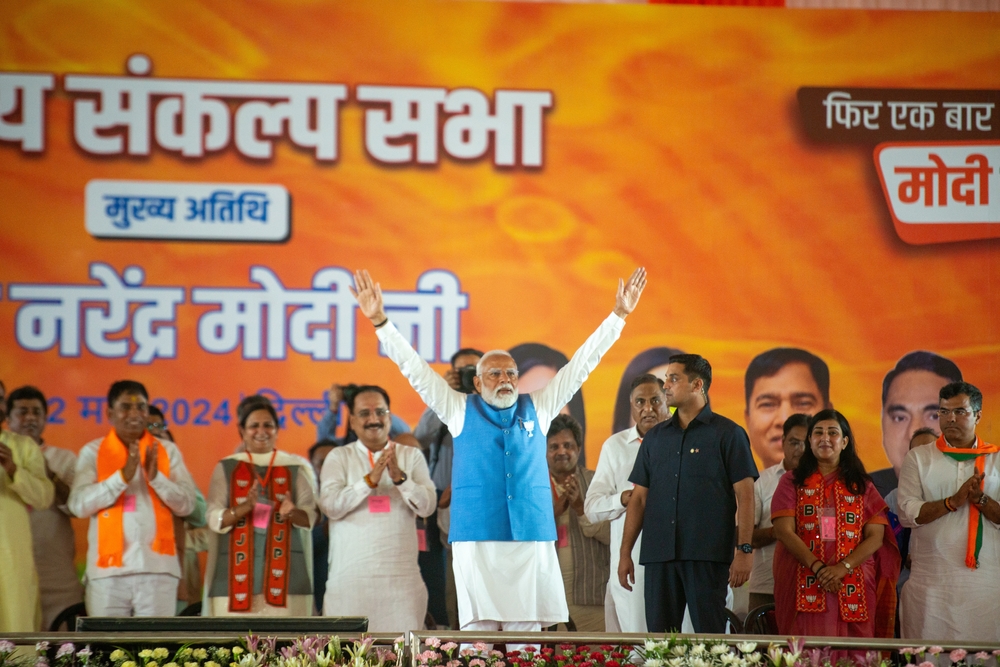How Modi’s real estate reforms are transforming India’s housing market – and what’s next
After the radical real estate reforms of Narendra Modi’s first two terms, the coalition led by the strongman prime minister is looking to consolidate gains in the property market

Only two years into his first term, Narendra Modi rocked India’s real estate sector by introducing the Real Estate (Regulation and Development) Act, 2016 (RERA). This legislation marked one of the most comprehensive regulatory changes the market had ever seen, signalling the prime minister’s clear intent to tackle the inefficiency and corruption that had long plagued the industry.
Soon after re-election in 2019, Modi introduced another landmark initiative: the Model Tenancy Act. The move aimed to overhaul the country’s rental market by creating a more balanced framework for landlords and tenants, addressing a longstanding issue in India’s cities. Like RERA, this reform highlighted his method of confronting deep-rooted problems in the market through decisive legislative action, even in the face of resistance from vested interests.
Now, with Modi’s third term well underway, the question remains: What does the future hold for a sector expected to contribute 13 percent to the nation’s GDP by 2025?
“With the National Democratic Alliance back, the real estate market is set for continued transformation, building on the stability and reforms that have already boosted transparency and investor confidence,” says Ajai A Kapoor, founder and CEO of real estate services firm 360 Degrees. “The next five years promise significant growth, driven by ongoing policy innovations and a clear focus on modernisation.”
In addition to ongoing refinements to RERA and the Model Tenancy Act, one of Modi’s early programmes, Pradhan Mantri Awas Yojana (PMAY), will receive renewed focus. The government is expected to introduce further measures to expand the affordable housing scheme. Kapoor notes that the continued success of PMAY reflects the government’s commitment to “housing for all,” with potential enhancements such as new tax incentives for developers and buyers, streamlined approval processes, and targeted initiatives for urban centres, including a metro cities’ affordable housing index roll-out.
The real estate market is set for continued transformation, building on the stability and reforms that have already boosted transparency and investor confidence
“These measures are anticipated to ensure that the scheme adapts to the evolving needs of India’s urban population while continuing to drive significant growth in the real estate sector,” he adds.
Alongside affordable housing expansion, the government is promoting green building adoption through several initiatives. The Indian Green Building Council (IGBC), under the Confederation of Indian Industry (CII), offers incentives like fast-tracking environmental clearance for IGBCcertified projects. Moreover, the Ministry of Environment, Forest, and Climate Change recently mandated that large construction projects obtain environmental clearance, including compliance with sustainability criteria.
States like Maharashtra and Gujarat have also introduced their green building incentives, such as property tax rebates and development charge discounts for projects incorporating sustainable features. These measures aim to encourage developers to integrate renewable energy sources, rainwater harvesting, and energy-efficient materials. But Maharashtra, like other parts of India, still lacks a comprehensive policy to encourage green buildings, according to Keval Valambhia, chief operations officer for the Maharashtra Chamber of Housing Industry.

“This should include not only incentives for developers but also integrated urban planning that prioritises sustainability from the ground up. Expanding these green initiatives, especially in metropolitan areas, can help address environmental challenges unique to specific regions.”
India’s real estate market is deeply influenced by these regional dynamics, with significant variations between urban and rural areas, and between Tier 1, Tier 2, and Tier 3 cities. While major metropolitan areas like Mumbai and Delhi continue to dominate, the growth potential in Tier 2 and Tier 3 cities is increasingly apparent. Cities like Ahmedabad, Jaipur, and Lucknow are witnessing a surge in development, driven by urbanisation, improved infrastructure, and government incentives aimed at boosting regional economies.
The Smart Cities Mission, targeting infrastructure development in 100 cities, is a key growth driver in these regions. These cities offer more affordable real estate options and are attracting both developers and buyers seeking opportunities outside the crowded Tier 1 cities.
But these regional dynamics pose challenges. In states where government changes are expected or coalition dynamics are complex, uncertainty can impact policy continuity and regulation consistency. Developers in politically unstable states often face delays in project approvals, changes in land acquisition laws, or shifts in urban planning priorities, according to Valambhia.
“Developers must be prepared to navigate the varied political and regulatory landscapes across India, especially in regions where government changes might disrupt the market,” he notes.
Another key challenge is the sector’s lack of formal recognition as an industry. Despite being a major contributor to GDP and employment, the sector remains officially unrecognised, largely due to its fragmented structure and complex regulations. This lack of recognition is compounded by challenges such as inconsistent state regulations, land acquisition issues, and limited transparency, hindering the sector’s formalisation.
Formal recognition is not just bureaucratic; it is essential for aligning the sector with national priorities like affordable housing and infrastructure development, according to Sangeet Hemant Kumar, associate partner at Integrow Asset Management.
“Collaboration between the government and real estate developers is crucial for the sector’s long-term success. Formal recognition of real estate as an industry would be a vital step in facilitating this partnership, ensuring that developers have the support needed to align with national priorities like affordable housing and infrastructure development,” he says.
The coalition nature of the current government adds complexities that could impact the real estate sector. While political stability is generally beneficial, the need for consensus among diverse parties in a coalition often slows decision-making and delays the implementation of reforms, especially those requiring state-level cooperation. Developers may face inconsistent regulations across states, complicating projects that span multiple regions.
“In a coalition government, the need for consensus can water down crucial reforms, particularly those related to land acquisition and urban infrastructure,” explains Kumar. “Developers must be agile, adapting to a regulatory environment that may shift depending on political dynamics.”
As Modi’s third term unfolds, India’s real estate sector is poised between progress and complexity. Landmark reforms like RERA and the Model Tenancy Act have set the stage for transparency and growth, while ongoing initiatives in affordable housing and green building signal a future-focused agenda.
Still, the sector faces formidable challenges— from navigating coalition politics to achieving long-sought industry recognition. The real test will be whether the government can maintain momentum amidst these challenges, ensuring that the sector almost doubles its fraction of GDP next year, whilst driving sustainable, inclusive growth.
This article was originally published on asiarealestatesummit.com. Write to our editors at [email protected].
Recommended
Meet the architect transforming Asia’s retail spaces with nature-inspired designs
David Buffonge, the cofounder of Hong Kong-based Lead8, has strong opinions on how to improve built environments around Asia
6 sights to check out in Siem Reap, Cambodia
Cambodia’s “temple town” is bolstering its touristfriendly attributes with new infrastructure and residential developments
Inside Asia’s luxury resort residences that are redefining high-end living
Asia’s resort residence market is witnessing a shift as investors eye larger, multifunctional units
How joining BRICS could give Thailand and Malaysia a new economic edge
Thailand and Malaysia are eyeing membership in the bloc of emerging nations







